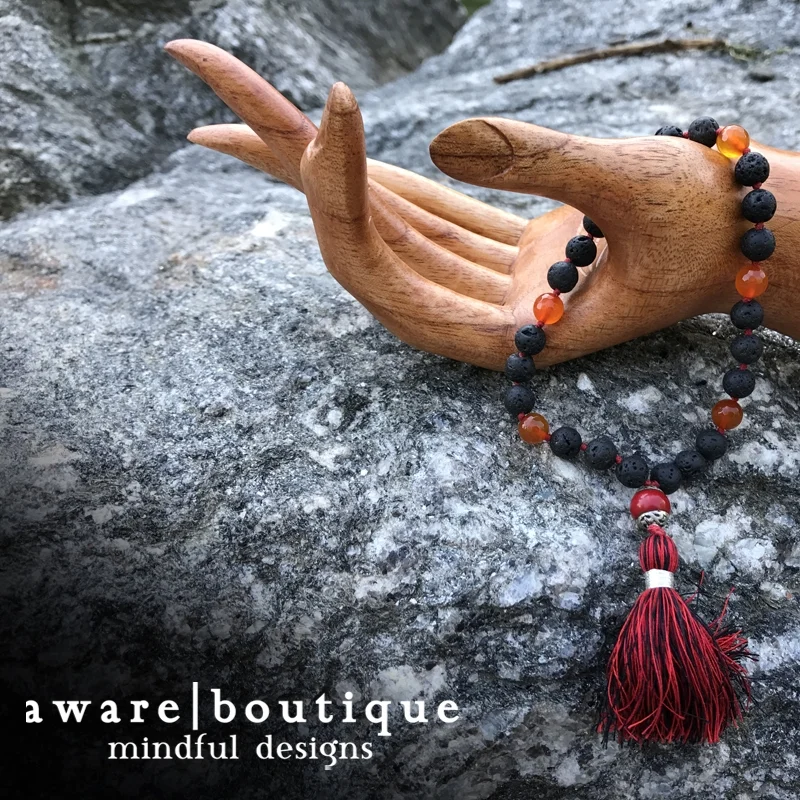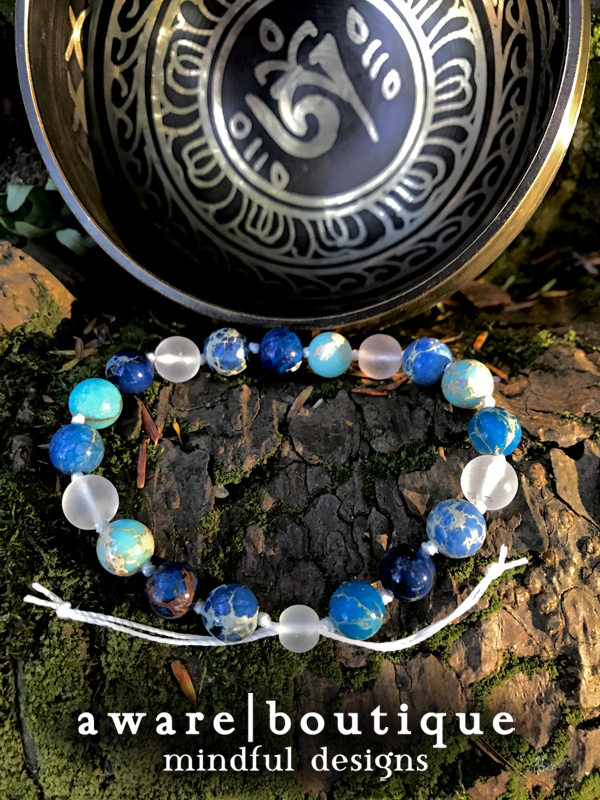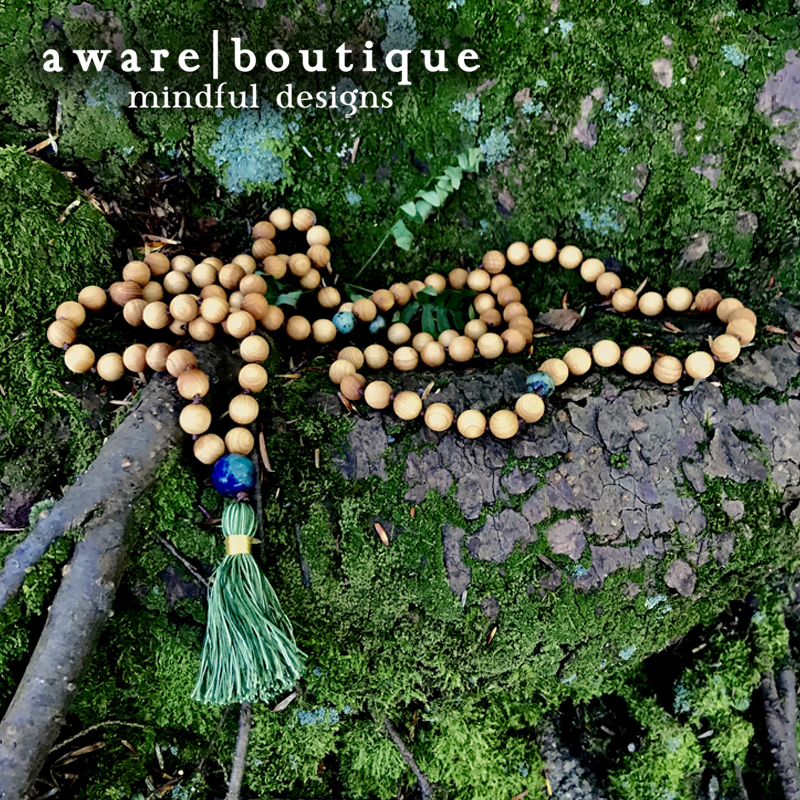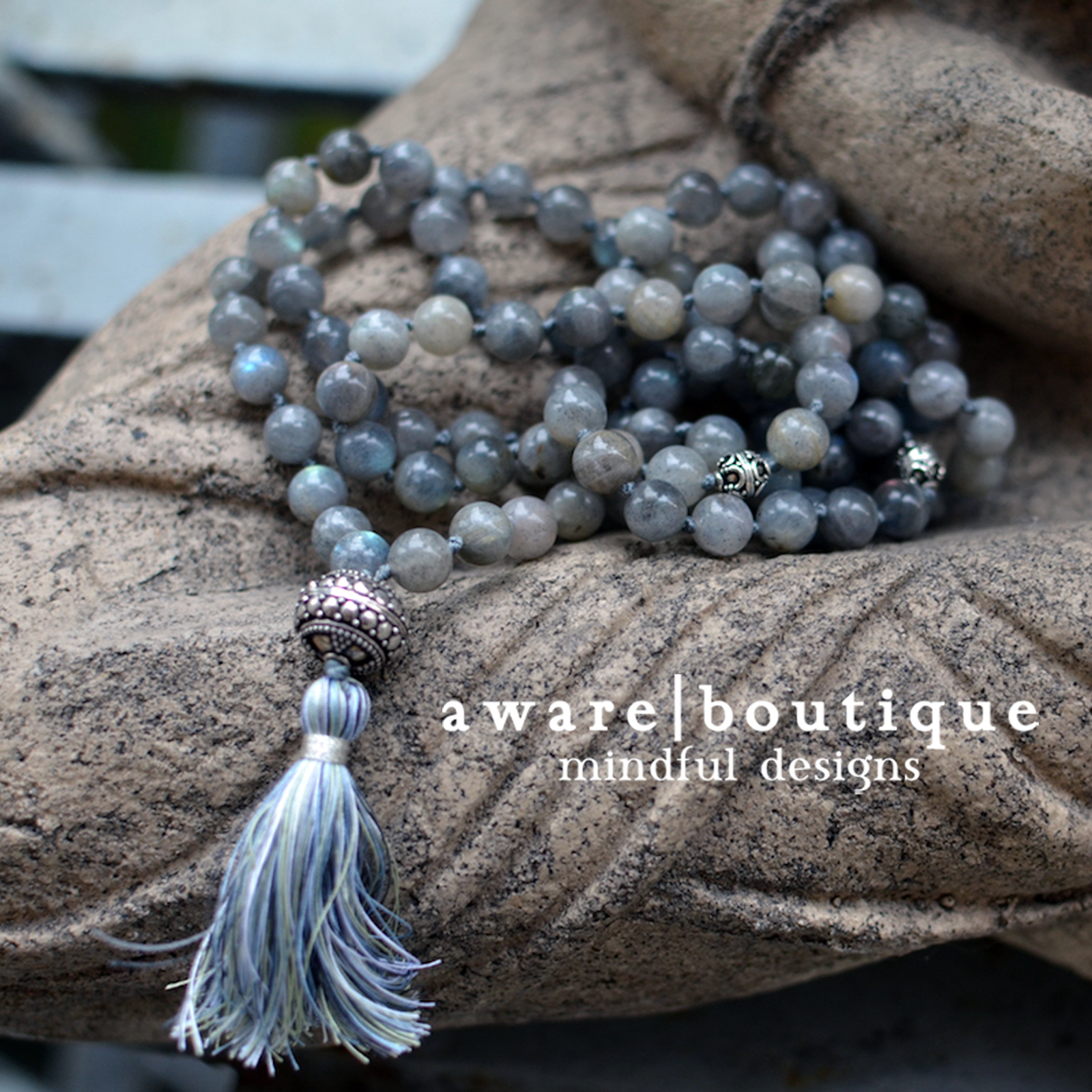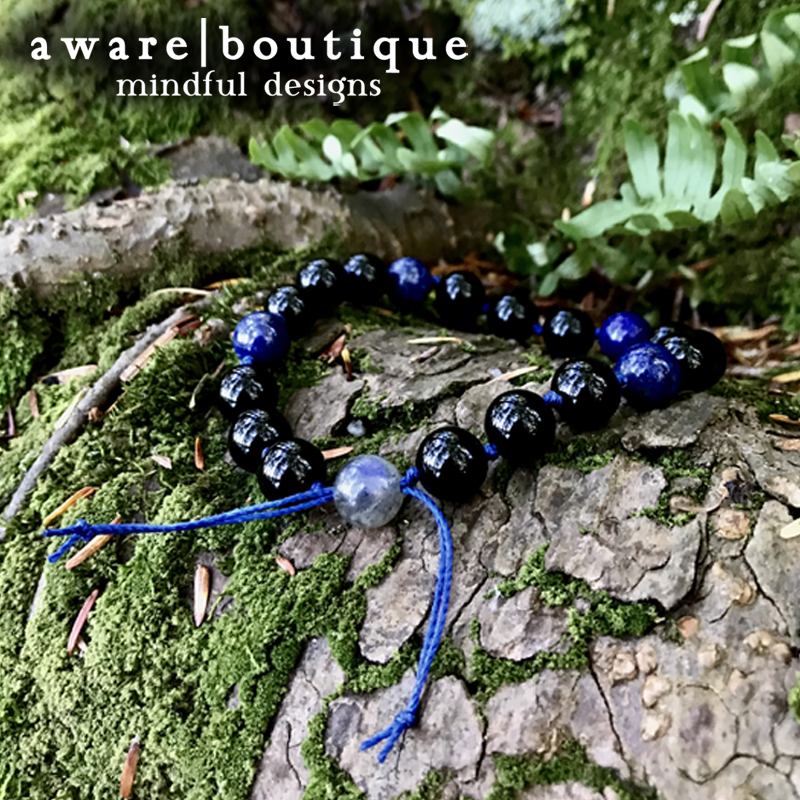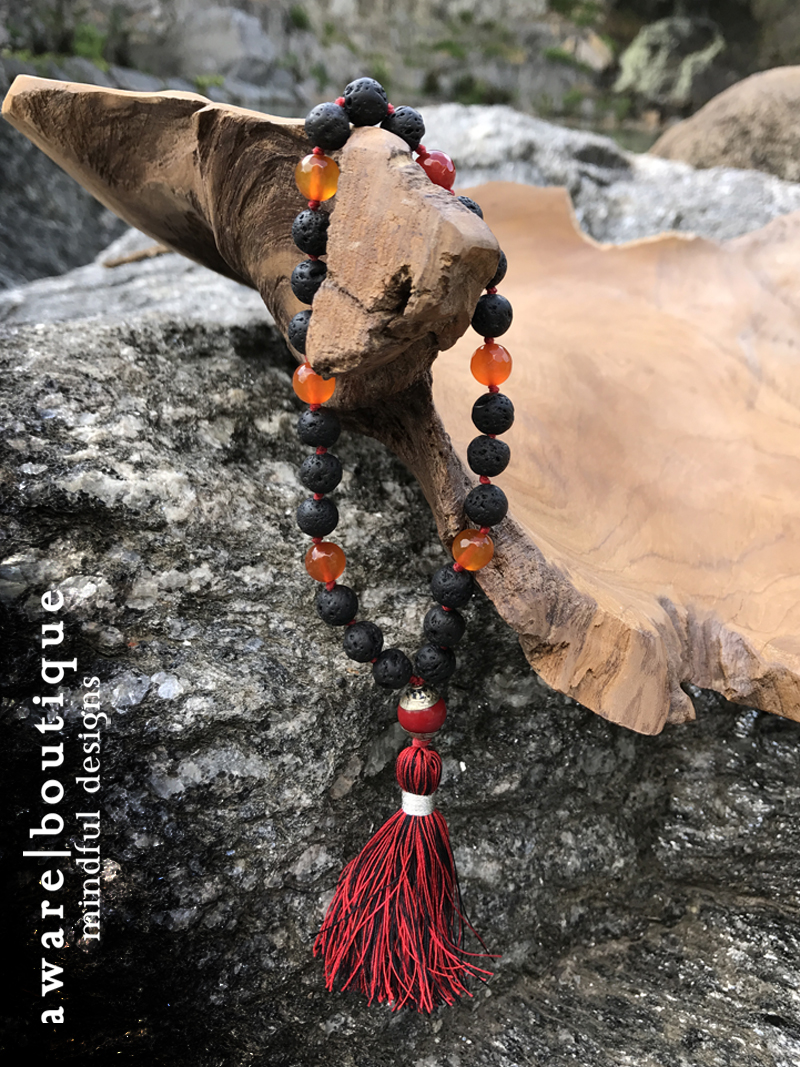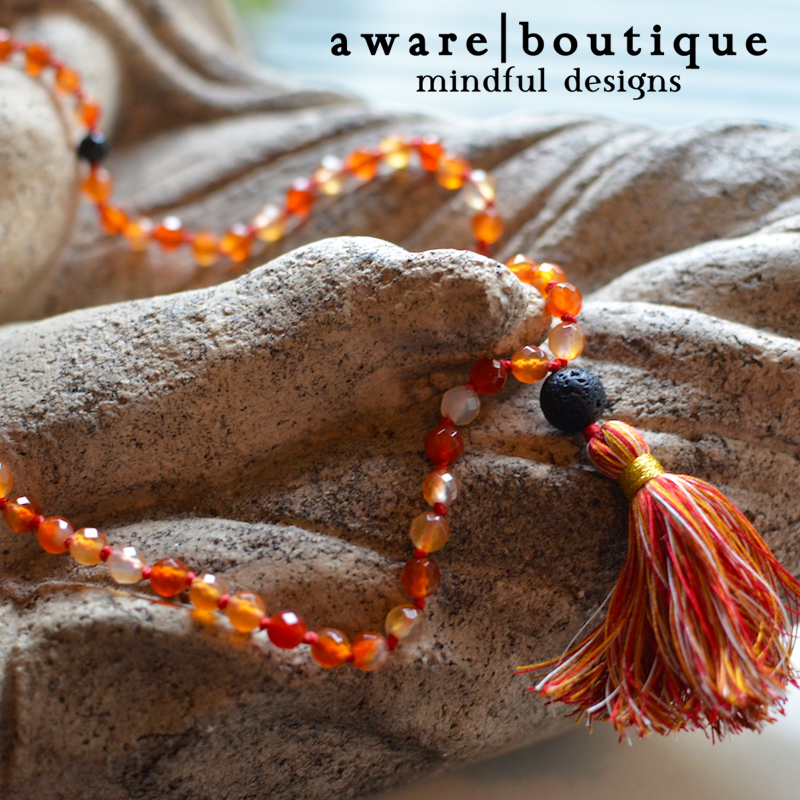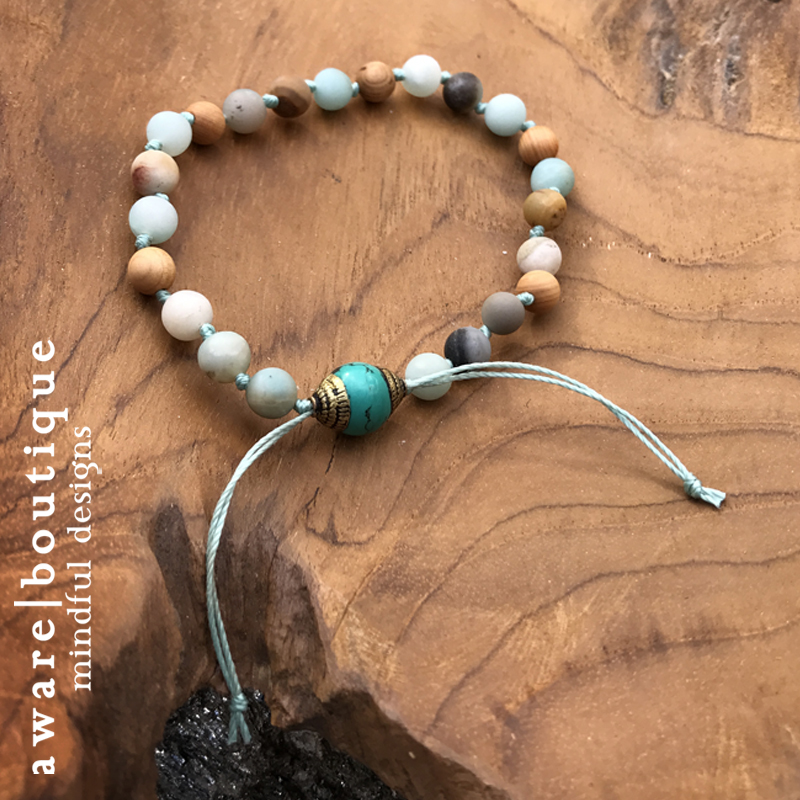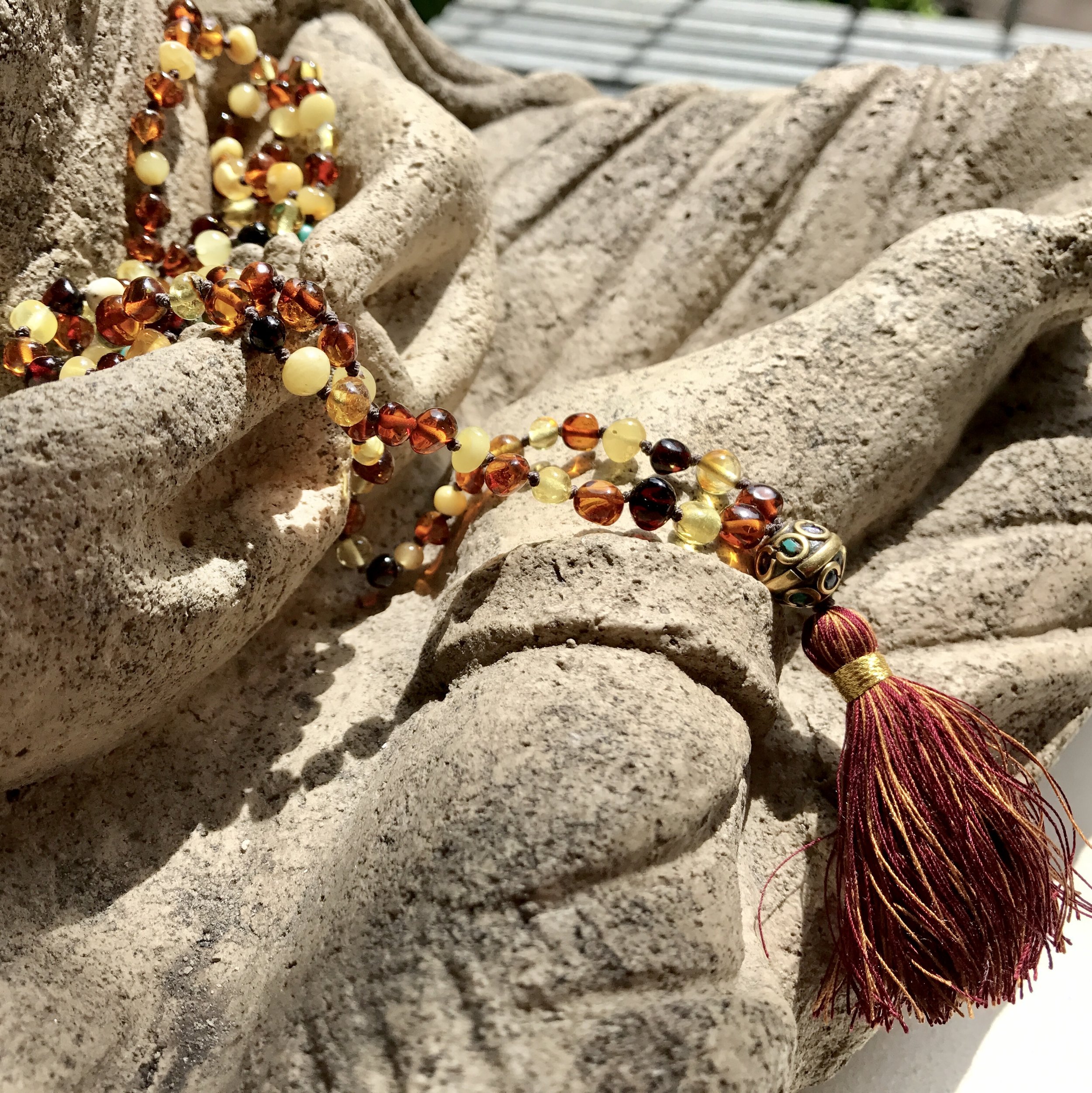Pele Collection
Pele is one of the most well known and revered in Hawaiian mythology. She is a goddess of fire, lightning, dance, wind and volcanoes. She is both a creator and destroyer. Pele throws molten fountains into the air and governs the great flows of lava. With her power over the volcanoes, she created the Hawaiian Islands, and to this day, she has been known to reveal herself throughout the beautiful islands she crafted herself.
This design is part of our Fire Collection. The Pele collection features Lava Stones, with Fire Agate marker beads, and a handcrafted guru bead from Tibet of Tibetan silver and Copal. Its metaphysical properties include:
- Promotes strength
- Instills courage & passion
- Stabilizing in times of change
- Strengthens integrity
- Inspires Creativity
- Combats anger & negativity
- Protects & encourages self-healing
108 Bead Mala
This traditional Tibetan mala has 108 beads, plus 3 marker beads (not to be counted in meditation), and a guru bead and silk tassel. This mala has been strung with red color Nylon thread for its strength and durability, especially important when working with natural stones, as their hard edges can sometimes rub against and weaken other threads such as cotton or silk. All of our malas are hand-knotted between each bead, which protects your beads should the necklace ever break. It also helps alleviate potential damage caused by beads rubbing against each other.
27 Bead Pocket Mala
This pocket mala is a quarter size of a 108 Bead Tibetan Mala. It has 27 beads plus 2 marker beads (not to be counted in meditation), and a guru bead and silk tassel. Some people choose to use Pocket Malas as compact travel size meditation malas, while others prefer to place it on the edge of a yoga mat to enhance mindfulness, or simply wear it on their wrist to benefit from the metaphysical properties alone. Please keep in mind that because the thread is not elastic, our Pocket Malas are not adjustable, and therefore may or may not fit your wrist comfortably.
Intention Bracelet
This bracelet is laid out in a beautiful Triratna pattern emphasizing groupings of 3, with marker beads between each set. While this bracelet does not contain the sacred 27 beads for counting mantras, the number three is sacred in Buddhism as well. In Buddhism, the number 3 can be seen to represent the Three Jewels (the Triratna) that make up Buddhism. These are: The Buddha, The Dharma (The body of teachings that describe Buddhist doctrine and belief), and The Sangha (The group of people who follow the Buddha and his teachings).
GEMSTONES & PROPERTIES
Lava Stone (Basalt)
Basalt is a rock formed from magma erupting from a volcano. Since basalt is formed from molten lava, it originates from rock that was heated to the point of liquifying, you can only imagine the strength contained in this stone. Basalt is a stone of strength and courage, it provides stability in times of change. It often helps to dissipate anger and provide guidance and understanding. Because Lava Stone comes from volcanic origin, the nooks and crannies make each stone completely unique. Because of its porous nature, Lava Stone can also be infused with oils for further healing.
Fire Agate
Fire Agate, known as the spiritual flame of absolute perfection, is a variety of Chalcedony, a mineral of the Quartz family. Historically, Fire Agate was used in alchemy because it was believed to contain the essence of fire. It is a stone of integrity, encouraging high standards of behavior in self and others, and promotes passion in love and in life. Fire Agate provides a steady, vibrant energy that stimulates a zest for living. It is a stone of creativity and expression, and is particularly helpful in overcoming artistic blocks of all kinds. Agate promotes inner stability, composure, and maturity, while its warm protective properties encourage security and self-confidence.
Copal
Copal is a resinous substance in an intermediate stage of polymerization and hardening between more viscous resins and Amber. Copal is tree resin that has not gone through the fossilization process that makes amber what it is today. Experts can't agree about how old copal has to be before it becomes amber (it depends on geological, botanical and chemical transformations), but the general consensus seems to be that copal is usually less than 100,000 years old, but sometimes can be as young as 1000 years old. By comparison, the oldest amber pieces date to the Upper Carboniferous period, approximately 320 million years ago. Copal ranges in color from pale yellow, orange, red and white. Copal has a long, aromatic history. It has been valued since Neolithic time for its beauty when used in ornamentation, but even more so for its use in religious rites. The name "copal" comes from the Mesoamerican Nahuatl word "copalli" meaning "incense." A powerful yet gentle healer and cleanser, Copal draws out and transmutes negative energy of all kinds on all levels. Copal aids in physical self-healing, emotional healing of depression, and environmental clearing. Highly protective, Copal also aids in the manifestation of ideas to reality. The life force trapped within Copal promotes fertility, and its protective and environmental clearing properties make it a good stone to use in a healing room or in preparation for childbirth.

